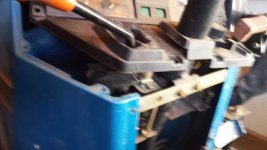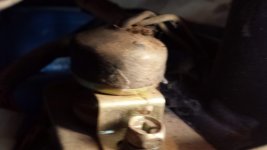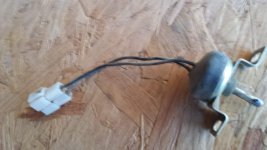Hi Yall,
I know this is a really old thread but since this switch is now really expensive I thought I would share my recent repair experience.
I have a 1920 but from the looks of it, the switch on the 1720 is the same.
The basic construction of the switch has a 2mm diameter copper cylinder, about 6mm in length that is held in a slot and pushed on by a spring. When the shifter moves to the neutral position, this cylinder comes in contact with a very small metal detente that is attached to one of the wires. The other wire is attached to a much larger copper plane.
Over time, this small detente wears into the copper cylinder and eventually wears so much that it fails to make contact. It wears a groove into the cylinder.
But all is not lost.
The switch can be opened and the copper cylinder can be flipped 180 and it will make contact again.
The switch needs to be out of the tractor to do this. Note the orientation of the switch before you remove it.
Pull back the rubber boot to reveal the wire contacts and the insulating board.
There are 3 tabs that hold an insulating board with the wires to the metal part of the switch. Use a small screw driver to pry these back.
When removing the board with the wires be sure that it is facing upwards. The copper cyclinder and an internal ball bearing are spring loaded so open slowly over something that will catch them should they spring out.
The copper cylinder can be cleaned up with some very fine sand paper. The detente should be cleaned up too but not with sand paper, use an old tooth brush. This detente hardly sticks out to begin with so don't sand it down. On the copper cylinder, you'll likely find a groove that the detente wore into it. Be sure that this groove is not in the same position when you put the cylinder back. You need to flip 180. Since the detente is not in the center of the cylinder, the 180 flip will provide a new full diameter surface to contact.
Put the insulating piece with the wires back in the same orientation and then bend back the 3 tabs that were pried open. Use pliers to bend then back all the way and provide a bit of pressure.
Pull back the rubber boot over the insulating board.
The switch should have some new life now.


